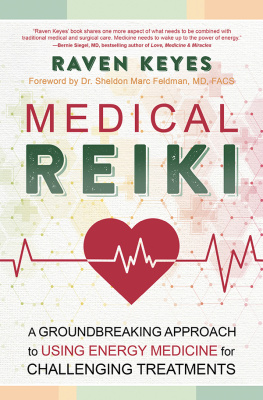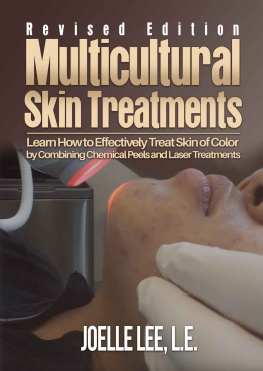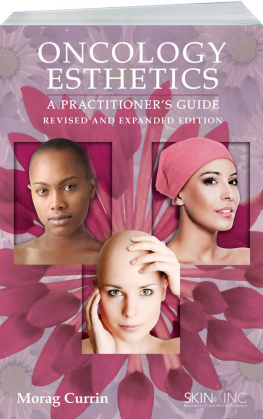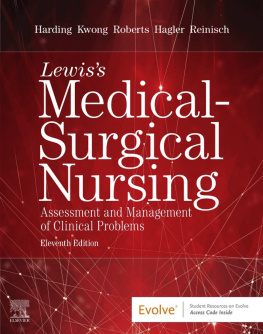Neither this book nor any part may be reproduced or transmitted in any form by any means, electronic or mechanical, including photocopying, microfilming, and recording, or by any information storage retrieval system, without permission in writing from the publisher.
To the best of our knowledge the information in this book is accurate. However, in a time of rapid change, it is difficult to ensure that all information provided is entirely accurate and up-to-date. Therefore, the author and the publisher accept no responsibility for any inaccuracies or omissions and specifically disclaim any liability, loss, or risk, personal or otherwise, which is incurred as a consequence, directly or indirectly, of the use and/or application of any of the contents of this book. Mention of trade names or commercial products does not constitute endorsement or recommendation for use by the publisher.
845 N. Michigan Ave., Suite 925W
Chicago, IL 60611
Tel: 312-440-9740
www.trueuesthetics.com
PREFATORY NOTE
Aesthetics vs. Esthetics: A Distinction
Throughout this book you will see the spelling for (a)esthetics varies between aesthetics and esthetics. These words are often used interchangeably in the cosmetic industry; however, they do have different meanings, and this difference is important to your complete understanding of Aesthetics Exposed.
Aesthetics is about the nature of art dealing with beauty. This term is commonly used when dealing with cosmetic medicine.
Estheticians are licensed professionals who practice skin care or esthetics to improve the appearance of the outer layers of the skin. Estheticians are likely trained on basic anatomy of the skin, facials, hair removal, exfoliation treatments, and makeup application. There are now more schools that offer extended curriculums that go above and beyond the basics.
The distinction between these terms is important for the following reasons, linked to the respective terms application within this book:
Esthetics will be used when discussing treatments performed by estheticians dealing with the outermost layer of the epidermis. Aesthetics will be used when describing beauty, as well as treatments performed in cosmetic medicine.
You may also see the words patient and client used at different points, as well. Patient is the term used when speaking of someone receiving a medical service. Client is used when one is receiving a service in general such as a facial, massage, or haircut.


CHAPTER 1
Cosmetic Medicine Meets Skin Care
In this Chapter:
-- The Aesthetics Industry
-- Skin Care Meets Cosmetic Medicine
-- Benefits of Combining Skin Care and Medicine
-- Benefits to Practice
-- Importance of Professionalism
The Aesthetics Industry
The skin care industry is constantly growing, resulting in more career options for the esthetician. According to the Bureau of Labor Statistics, Employment of skin care specialists is expected to grow 25 percent from 2010 to 2020, faster than the average for all occupations. This growth is led by the increased awareness that skin care is an important adjunct to cosmetic medicine. In recent years, not only are dermatologists and plastic surgeons offering cosmetic services, but family practice physicians, ob/gyns and even dentists have jumped on the cosmetic bandwagon.
There has been some controversy regarding cosmetic skin care in medical settings such as dermatology, cosmetic surgery, or anything in between. The old way of thinking for some, notably those in the medical community, was that medicine and cosmetics were separate entities and should be kept that way. With physicians already addressing conditions of the skin and offering medical treatments for cosmetic enhancements, skeptics were asking the question of why one would need to see an esthetician. It had become somewhat of a battle wherein the majority of physicians thought that non-prescription topical skin care was unnecessary. What would cosmetics do for patients that prescriptive medicine would not?
One reason underlying this separation included the unfortunate fact that some skin care professionals, including estheticians and sales representatives, make false claims about cosmetic treatments. Moreover, there were also instances where estheticians gave advice against what was recommended by a physicianwhich is beyond the scope of practice for any non-medical provider and can cause serious complications.
Medical professionals are meant to treat conditions or abnormalities, whereas estheticians are meant to cosmetically enhance the skin. When this combination of treatment is implemented correctly, all involved win, and the client obtains the best results while the health of the skin is maintained. The medical practice has increased patient satisfaction, thereby producing higher retention rates and referrals, and the esthetician is inevitably credentialed by the physician.

Medical professionals are meant to treat conditions or abnormalities, whereas estheticians are meant to cosmetically enhance the skin.
Among the cosmetic services available today, the largest increase has been in nonsurgical procedures. In the last eight years alone, the number of these services has increased more than 680%. Two of these procedures, microdermabrasion and chemical peels, are most commonly performed by estheticians. This clearly indicates the increased value of adding skin care to the medical practice. This demand has prompted a large number of physicians to introduce cosmetic procedures, esthetic treatments, and skin care products.
According to recent information from the American Society for Aesthetic Plastic Surgery, nonsurgical procedures accounted for 83% of the total number of procedures performed, representing 39% of total expenditures. The top five minimally invasive procedures by number of cases reported are shown in the following chart:

















